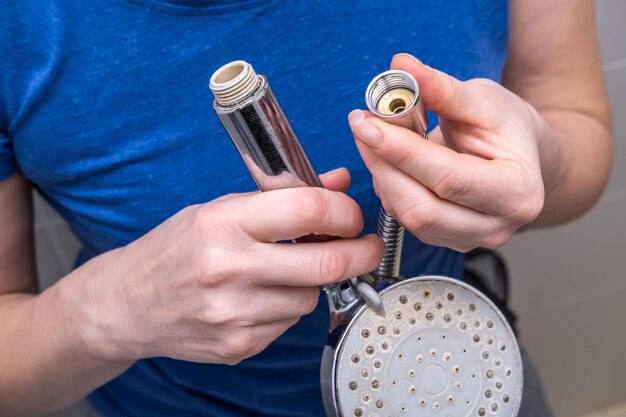The Ultimate Guide to Cleaning Your Hearing Aids
Hearing aids are invaluable companions for those seeking to improve their auditory experiences. Yet, like any technological device, they require careful maintenance to function optimally. If you're asking yourself, "How do I clean my hearing aids?" you've come to the right place. This comprehensive guide will walk you through the process step by step, ensuring your devices remain in excellent working condition while extending their lifespan.
Why Regular Cleaning is Essential
Many hearing aid users underestimate the importance of routine cleaning. Yet, regular maintenance is crucial for several reasons:
- Enhanced Sound Quality: Dirt and earwax accumulation can block sound pathways, reducing clarity.
- Extended Lifespan: Proper cleaning helps prevent damage from moisture and debris, resulting in longer-lasting devices.
- Avoiding Repairs: Regular upkeep can mitigate frequent visits for professional repairs.
- Hygiene: Regularly cleaned hearing aids can prevent ear infections and discomfort.
Keeping these benefits in mind can motivate a consistent care routine.
Tools You'll Need
Effective cleaning starts with having the right tools. Here’s a list of recommended items:
- Soft, Dry Cloth: For wiping down the surface.
- Cleaning Brush/Pin: Often included with hearing aids for removing debris.
- Wax Pick: Essential for removing earwax buildup.
- Air Blower: Useful for dislodging moisture.
- Dehumidifier: A drying box can eliminate accumulated moisture.
These tools set the foundation for a thorough cleaning.
Step-by-Step Cleaning Procedures
Regular Daily Cleaning
1. Remove Debris:
- Use the cleaning brush to gently whisk away any debris on the exterior.
- Focus around the microphone ports and the battery contacts.
2. Clean the Ear Molds:
- Use a soft, dry cloth to wipe the ear molds.
- If detachable, clean them separately under warm, soapy water. Dry thoroughly before reattachment.
3. Drying:
- Ensure moisture is completely removed by using an air blower.
- Consider placing the hearing aids in a dehumidifier overnight.
Weekly Deep Cleaning
1. Inspect Filters:
- Check and replace wax filters if they are clogged.
2. Clean Tubing:
- Detach and clean tubing with a thin wire or cleaning pin.
- Blow through the tubing to ensure it's clear.
3. Use of Cleaning Sprays:
- Only apply cleaning sprays with a damp cloth. Avoid direct contact with the device.
Monthly Maintenance
1. Professional Check-Up:
- Regularly schedule checks with a professional to ensure everything is working as it should.
- They can provide deep cleaning and check for any mechanical issues.
Types of Hearing Aids and Specific Cleaning Needs
Different types of hearing aids may require specific cleaning approaches:
Behind-the-Ear (BTE) Devices
These usually have more durable components. Focus on cleaning the ear mold and tubing thoroughly.
In-the-Ear (ITE) Devices
These are more susceptible to earwax buildup. Regular cleaning of the microphone port is crucial.
Receiver-in-Canal (RIC) Models
With receivers located inside the ear canal, debris removal near the earpiece demands caution.
Completely-in-Canal (CIC) and Invisible-in-Canal (IIC) Aids
These are prone to moisture and wax build-up due to their positioning. A wax guard should be checked and replaced frequently.
Troubleshooting Common Issues
1. Device Not Turning On:
- Verify battery charge.
- Clean battery contacts to ensure a proper connection.
2. Feedback or Whistling:
- Ensure the aid fits snugly.
- Check for blockages in the sound outlet.
3. Distorted Sound or Static:
- Clean the microphone ports carefully.
- Verify tubing and filters for wax obstructions.
Summarized Tips for Hearing Aid Maintenance 🌟
- 🗓️ Routine Cleaning: Incorporate daily, weekly, and monthly cleaning schedules.
- 🧼 Gentle Handling: Use soft tools and avoid water exposure.
- 🔋 Check Batteries: Always use fresh or fully charged batteries.
- 🌬️ Dehumidify: Use a dehumidifier regularly to avoid moisture damage.
- 👂 Professional Help: Regular professional check-ups for maintenance and repairs.
Conclusion: Empower Your Hearing Experience
Cleaning your hearing aids is not just about functionality; it's about protecting an investment that enhances your life quality. With consistent care, your devices will provide stellar performance and longevity. Make cleaning a routine, and you'll enjoy clearer sounds and fewer inconveniences.
Hearing aids are an essential tool, much like eyeglasses or orthopedic supports. Treat them with care, and they'll return the favor by keeping you connected to the world around you. Remember, clean aids mean clearer sounds. Keep this guide handy, and let it pave the way to an enhanced auditory journey.

Related Topics
- a Plus Hearing Aid Centers
- a Real Pain Showtimes Near Centerville
- Are Airpods Bad For Your Ears
- Are Apple Second Generation Airpods Hearing Aids
- Are Audien Hearing Aids Just Amplifiers
- Are Costco Hearing Aids As Good As Others
- Are Costco Hearing Aids Good
- Are Hearing Aid Domes Interchangeable
- Are Hearing Aid Subscriptions Worth It
- Are Hearing Aid Tax Deductible